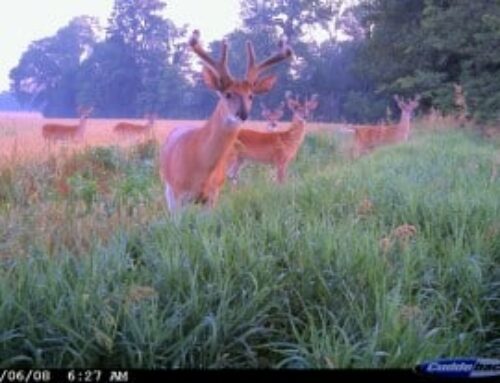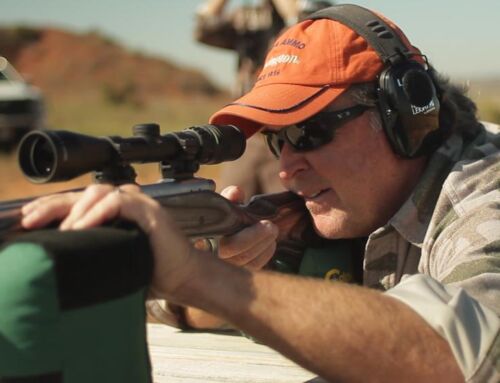 From Kansas to Virginia to Canada, 95 percent of adult does will come into estrous and be bred from roughly November 5-20, regardless of moon phase, or weather for that matter. That is the case every year. So take off anytime from Halloween though Thanksgiving, and you’ll hunt deer in some throes of the rut. And anytime you hunt rutting deer you have the potential to shoot a good buck.
From Kansas to Virginia to Canada, 95 percent of adult does will come into estrous and be bred from roughly November 5-20, regardless of moon phase, or weather for that matter. That is the case every year. So take off anytime from Halloween though Thanksgiving, and you’ll hunt deer in some throes of the rut. And anytime you hunt rutting deer you have the potential to shoot a good buck.
But I do believe that some days and weeks are better than others to take your hunt vacation according to the various phases of the “rutting moon” in late October and November. A lot of people are moon skeptics, but not me. There are a lot of variables to moon phase and deer movement, but there is something to it.
As I put together my BIG DEER moon predictions each year, I call up my friend Mark Drury, the big buck hunter and Outdoor Channel personality, who is as obsessed with the moon as I am. We talked it over yesterday and Mark didn’t waste any time saying, “I don’t like how the moon phases are lining up this year. I think it could be a tough season, especially if we have a warm fall.”
But cool weather will override the moon any year. The more cold weather and rain and/or snow we get this fall, the better the hunting will be during any moon phase.
The 2015 moon phases that line up with the 2015 rut are: Full, October 27…Last Quarter, November 3…Dark/New…November 11…First Quarter, November 19.
October 27: Full Moon
“I don’t like it when the full moon is in late October, things just don’t seem to time out right with the rut,” Mark said. That said, he and I both love to hunt the week of October 26 to Halloween. I’ll be up at Grant’s in Saskatchewan on a blackpowder hunt that week, and the full moon doesn’t bother me a bit. Like Mark, I prefer a full moon that occurs the first week of November because it exposes the seeking phase of the rut. While this full moon is a bit early, I’ll take it.
For the last 7 years Mark and I have texted back and forth from tree stands across America, talking about the rut and what we’re seeing. Our moon theory keeps building momentum: more mature bucks move well and are shot around the full moon in the rut each fall than during any other phase. “No doubt there is a correlation,” Mark says adamantly.
Marcus Lashley, a scientist who did a moon study for NC State a few years ago, backs us up, at least somewhat. “A common misconception is that deer can see better at night (and hence move all over the place) because it’s brighter,” he said. “But according to our data they actually move less on average at night during a full moon and more during the middle of the day, and also earlier in the evenings,” he says.
Therefore, they are more visible and more bucks are seen and shot.
One twist this year with the early full moon—Drury expects the buck movement and hunting to be best in the mornings during the last week of October, when the faint moon still hangs in the sky.
November 3: Last-Quarter Moon
You can never go wrong taking off the first 10 days of November any year, and push your vacay into second week if you can. Some big bucks will be on the prowl for sure. The record books show that more giants have been shot November 7-12 than any other days.
Drury says, “The hunting will be good, but I expect shorter periods of buck movement with the moon moving toward dark. Thirty minutes at first and last light will be prime, so get to your stand early and be ready.”
Once again the NC State moon study backs us up, at least partially. “If you are going to hunt the last hour of the day anytime this season, you should do it on the last quarter moon because that was the most extreme deer movement we saw during the whole study,” the researchers reported.
November 11: New Moon
Whitetails are crepuscular, which means they are active mostly at dawn and dusk, regardless of the moon phase. That never changes, but the intensity of deer movement in each moon phase does change, a little to a lot.
As we roll into the dark moon, Mark and I expect the trend of last week to hold—first and last 30 minutes of the day will be best. But keep this in mind. NC State researchers found that during any new moon, “we saw a large peak of movement at daylight, and below average movement the rest of the day and night.”
How I see it: If you hunt November 3 through November 15, prime rut time, you ought to hunt all day every day, because you never know when you’ll catch a big buck up and moving. But expect bucks to be most active and visible at daylight. Get on stand extra early and hunt the mornings extra hard.
November 19: First-Quarter Moon
The NC State study found that during the first-quarter moon, deer move less on average throughout the day than in all the other phases. The researchers said,”That would be a good seven days to work.”
Too, by now most gun seasons have started and deer have been pressured hard. Still, this is a time around Thanksgiving when many people get together to hunt, or get a few days off to hunt. Don’t worry about the moon. Go out and have fun. Spend as many hours in the woods as you can. Big bucks will be skittish and nocturnal, but you never know when another guy will push a buck out of cover and into your sights, and make your season.






Great article! I was watching Terry and Mark Drury discussing the moon and impact on deer movement one night during the week. Hard to dismiss all those years of field observation by hard core whitetail hunters.
Any words of advice for South Texas?
Wren, with your later rut the around the full moon Nov 25/Thanksgiving could be real good, let me know what buck movement you see that week, always gathering lunar anecdotes and data!
Thanks! Will provide feedback. Hunting hard the period of December 6-13 as we have determined December 8-10 our traditional peak on The Martinena.